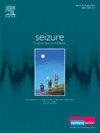Programming in Vagus nerve stimulation therapy: Consensus from a Nordic Delphi Panel
IF 2.8
3区 医学
Q2 CLINICAL NEUROLOGY
引用次数: 0
Abstract
Purpose
Despite VNS therapy being established broadly as a second line treatment for drug resistant epilepsy, there are currently no guidelines or recommendations giving sufficient and detailed guidance and suggestions to fully utilize the increasing array of parameter options.
Methods
A panel of 22 experts from the Nordic countries (6 were pediatric neurologists, 14 neurologists and 2 treating both pediatric and adult patients) was assembled to share their experience with VNS therapy using a 5-step Delphi approach. Agreement level ≥80% was considered strong consensus and 60 to79% was considered medium consensus.
Results
After the third round of the Delphi process there were 70 statements in different sections as: How to start the VNS after implantation (9 statements), How to do further adjustment after the initial phase (13 statements), How to use Autostimulation mode (14 statements), How to use scheduled programming (8 statements), Are there special settings for special seizure types/diagnosis (6 statements), How to use day-night programming (3 statements), What to know about Magnet mode (6 statements), How to manage side effects (3 statements), Considerations about gender/age and patient preferences (4 statements), and Practical programming (4 statements). In 46 statements (65.7%) the panel reached a strong consensus, in 11 (17.7%) a medium consensus, and in 13 (18.6%) no consensus was achieved.
Conclusion
The recommendations of the Delphi panel emphasize proactive deployment of available stimulation options including build up in duty cycle and the use of rapid cycling as well as increasing the output current if response with primary target current is insufficient. Additionally, the usage of Magnet mode and Autostimulation mode were encouraged. Guidance on how to use the newest stimulation options such as day-and-night and scheduled programming for improved feasibility and tolerability is provided.
迷走神经刺激治疗的程序设计:来自北欧德尔菲小组的共识
目的:尽管VNS疗法已被广泛确立为耐药癫痫的二线治疗方法,但目前尚无指南或建议提供充分和详细的指导和建议,以充分利用越来越多的参数选择。方法来自北欧国家的22名专家(6名儿童神经科医生,14名神经科医生,2名同时治疗儿童和成人患者)组成了一个小组,分享他们使用五步德尔菲法治疗VNS的经验。同意水平≥80%为强一致,60 ~ 79%为中等一致。结果经过第三轮德尔菲筛选后,各章节共有70条语句:植入后如何启动VNS(9句话),初始阶段后如何进一步调整(13句话),如何使用自动刺激模式(14句话),如何使用预定程序(8句话),特殊癫痫类型/诊断是否有特殊设置(6句话),如何使用昼夜程序(3句话),磁铁模式(6句话),如何管理副作用(3句话),关于性别/年龄和患者偏好的考虑(4项陈述),以及实用编程(4项陈述)。在46份声明(65.7%)中,专家组达成了强烈共识,11份(17.7%)达成了中等共识,13份(18.6%)没有达成共识。德尔菲小组的建议强调主动部署可用的刺激方案,包括增加占空比和使用快速循环,以及在主要目标电流响应不足时增加输出电流。此外,鼓励使用磁铁模式和自刺激模式。提供了如何使用最新增产方案的指导,例如昼夜和计划编程,以提高可行性和耐受性。
本文章由计算机程序翻译,如有差异,请以英文原文为准。
求助全文
约1分钟内获得全文
求助全文
来源期刊

Seizure-European Journal of Epilepsy
医学-临床神经学
CiteScore
5.60
自引率
6.70%
发文量
231
审稿时长
34 days
期刊介绍:
Seizure - European Journal of Epilepsy is an international journal owned by Epilepsy Action (the largest member led epilepsy organisation in the UK). It provides a forum for papers on all topics related to epilepsy and seizure disorders.
 求助内容:
求助内容: 应助结果提醒方式:
应助结果提醒方式:


